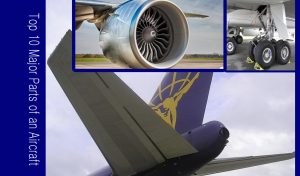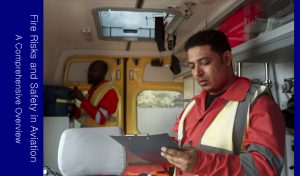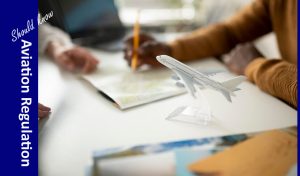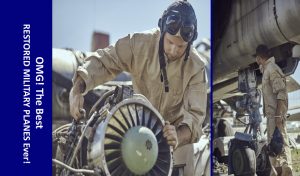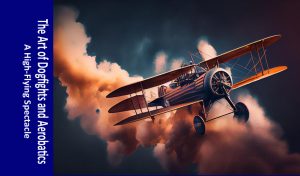Aerobatics is a captivating and demanding form of aviation that involves performing a wide range of complex maneuvers in an aircraft. The Science of Aerobatics and Physics Behind the Stunts is deeply rooted in physics, particularly in aerodynamics, the study of how air interacts with the aircraft’s surfaces. To understand the physics behind the stunts, let’s delve into greater detail:
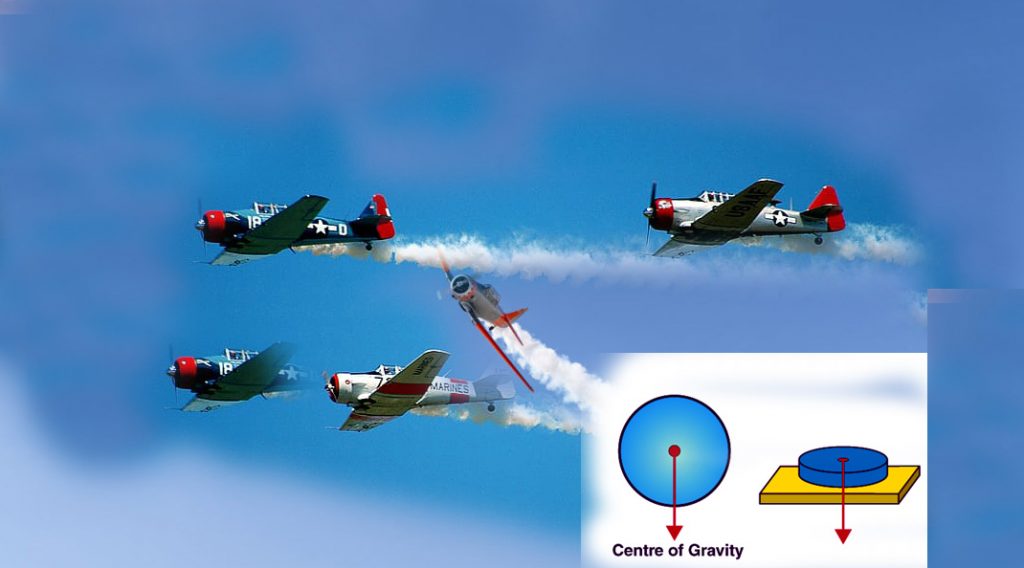
1-Aerodynamics and Lift:
- Bernoulli’s Principle: Central to aerobatics is Bernoulli’s principle, which explains how lift is generated. It states that as the velocity of a fluid (in this case, air) increases, its pressure decreases. In aerodynamics, the faster-moving air above an aircraft’s wing creates lower pressure, while slower-moving air below the wing results in higher pressure. This pressure difference generates lift, allowing the aircraft to rise into the air.
- Angle of Attack: The angle of attack (AOA) is the angle between the wing’s chord line and the oncoming air. Adjusting the AOA is a primary means of controlling lift. By increasing the AOA, a pilot can generate more lift, while decreasing it reduces lift.
- Ailerons: Ailerons are control surfaces located on the wingtips. They are used to roll the aircraft left or right. When an aileron is raised on one wing and lowered on the other, it creates differential lift, causing the aircraft to roll.
2-Forces in Aerobatics:
- Lift: The upward force generated by the wings opposes gravity, allowing the aircraft to stay aloft. Aerobatic maneuvers often involve manipulating lift to perform climbs, rolls, loops, and more.
- Gravity (Weight): Gravity is the force that pulls the aircraft downward. To perform aerobatic stunts, pilots take advantage of gravity by transitioning between climbing and descending maneuvers.
- Thrust: Thrust is the forward force generated by the aircraft’s engines. It plays a critical role in controlling airspeed, enabling pilots to execute various maneuvers.
- Drag: Drag is the aerodynamic force that opposes thrust. Effective management of drag is essential for controlling airspeed and energy during aerobatics.
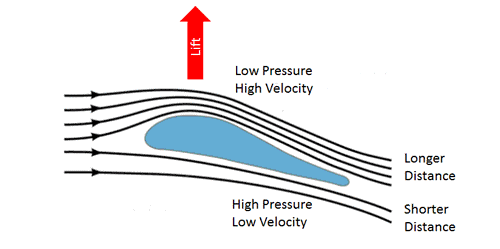
3-Energy Management:
Energy management is a critical aspect of aerobatics, as it involves controlling and manipulating the aircraft’s energy state, which is the combination of airspeed and altitude. Proper energy management allows aerobatic pilots to perform a wide range of maneuvers with precision and safety. Here’s a closer look at how energy management works in aerobatics:
- Energy States:
- Potential Energy: This is the energy associated with an aircraft’s altitude. The higher an aircraft is, the more potential energy it possesses. Potential energy is converted into other forms of energy as the aircraft descends.
- Kinetic Energy: Kinetic energy is related to an aircraft’s airspeed. The faster an aircraft is flying, the more kinetic energy it has. Kinetic energy can be converted into potential energy and vice versa during maneuvers.
- Climbing and Descending:
- When an aerobatic pilot wants to gain altitude, they will typically trade off airspeed (kinetic energy) for altitude (potential energy) by pulling the aircraft into a climb. This is often done at the beginning of a maneuver.
- Conversely, when descending, the pilot will trade altitude for airspeed by pushing the aircraft’s nose down. This allows the aircraft to gain speed as it loses altitude.
- Managing Airspeed:
- Different aerobatic maneuvers require specific airspeeds. Energy management involves ensuring the aircraft has the appropriate airspeed for the intended maneuver.
- For example, a loop typically starts with a climb to gain altitude and reduce airspeed, followed by a dive to convert potential energy back into kinetic energy, and finally, a pull-up to regain altitude and complete the loop.
- Executing Maneuvers:
- During aerobatic maneuvers, pilots carefully balance altitude and airspeed to maintain the desired energy state. This involves precise control inputs and timing.
- For rolls, spins, loops, and other maneuvers, pilots need to manage energy to ensure the aircraft behaves as expected and stays within its safe flight envelope.
- Safety and Recovery:
- Effective energy management is crucial for safety. If a pilot mishandles energy during a maneuver, it can lead to stalls, spins, or excessive G-forces, which can be dangerous.
- Pilots must also be prepared to recover from unexpected situations by quickly adjusting the aircraft’s energy state.
- Aerobatic Sequences:
- Aerobatic displays often consist of sequences of maneuvers. Energy management becomes even more critical when transitioning between maneuvers, as pilots need to plan for each maneuver’s energy requirements and ensure a smooth flow from one to the next.
4-G-Forces:
- Positive G-forces push the pilot and aircraft downward, affecting the pilot’s body and the aircraft’s structure. Aerobatic pilots must withstand and manage these forces.
- Negative G-forces push the pilot and aircraft upward, potentially leading to disorientation and other physiological effects.
To know more in detail about G-Forces, please visit my explicit blog here.
5-Aerobatic Aircraft Design:
The physics behind aerobatic aircraft design is grounded in the principles of aerodynamics, structural mechanics, and the performance characteristics necessary to execute a wide range of acrobatic maneuvers. Here are some key physics principles involved in aerobatic aircraft design:
- Aerodynamics:
- Lift and Drag: Aerobatic aircraft must generate enough lift to perform maneuvers and control their altitude. The airfoil shape, angle of attack, and wing loading are crucial factors.
- Control Surfaces: Control surfaces like ailerons, elevators, and rudders manipulate the airflow over the wings and tail to control the aircraft’s attitude and direction.
- Center of Pressure: The center of pressure changes as the aircraft’s attitude changes during aerobatic maneuvers. Designers must consider how this affects control and stability.
- Structural Mechanics:
- Strength and Stiffness: The aircraft’s structure must be designed to withstand the extreme forces encountered during aerobatics, including high-G loads. Material selection and structural design are critical.
- Torsion and Bending: Aerobatic maneuvers subject the aircraft to torsional and bending stresses. The airframe must resist these forces without deformation or failure.
- Weight and Balance:
- Center of Gravity (CG): Proper weight distribution ensures stability and maneuverability. The CG position influences the aircraft’s trim and handling characteristics.
- Inertia: The moment of inertia about different axes affects how quickly the aircraft can change its orientation. A low moment of inertia enhances maneuverability.
- Power and Propulsion:
- Thrust-to-Weight Ratio: High thrust-to-weight ratio is essential for quick acceleration and the ability to recover from maneuvers. Engine power and propeller efficiency are crucial factors.
- Energy Management: Aerobatic aircraft often perform energy-intensive maneuvers that require careful energy management, involving altitude and airspeed control.
- Control and Stability:
- Control Response: The aircraft’s control system should provide rapid and precise response to pilot inputs to execute aerobatic maneuvers accurately.
- Stability: Aerobatic aircraft need to be inherently stable but also capable of controlled instability when required for specific maneuvers.
- High-G Loads:
- Aerobatic maneuvers subject the aircraft and pilot to high gravitational forces (G-forces). Designing for structural integrity and pilot comfort under these loads is crucial.
- Drag Management:
- Aerobatic aircraft often require rapid changes in airspeed. Designing the aircraft to minimize drag during maneuvers and maximize speed in straight and level flight is essential.
- Safety Features:
- Safety features, such as emergency recovery systems or ejection seats, rely on physics principles to function effectively.
- Stall and Spin Behavior:
- Understanding the aerodynamics of stalls and spins is crucial for designing aircraft that can recover from these situations safely.
- Stress Analysis:
- Finite element analysis and other stress analysis techniques are used to ensure the aircraft’s structure can withstand the loads and stresses encountered during aerobatic maneuvers.
6-Center of Mass and Center of Gravity:
Balancing the aircraft’s center of mass (CM) and center of gravity (CG) is indeed crucial for stability and maneuverability during aerobatics, as well as for the overall safe operation of any aircraft. These two terms are closely related but not exactly the same:
- Center of Mass (CM): The center of mass refers to the point within the aircraft where its mass is concentrated. It is essentially the weighted average of all the individual mass elements within the aircraft. The CM is a fundamental property of the aircraft’s physical structure and distribution of mass.
- Center of Gravity (CG): The center of gravity, on the other hand, is the point at which the entire weight of the aircraft appears to act vertically downward. It’s the point through which the force of gravity can be considered to act. The CG is a function of both the aircraft’s mass distribution and its orientation relative to the Earth’s gravitational field.
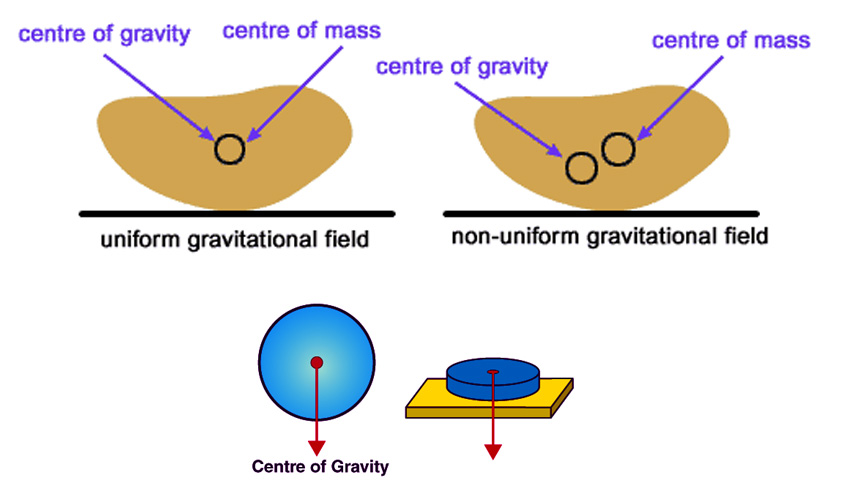
Properly balancing the aircraft involves ensuring that the CM and CG coincide or are very close to each other. Here’s why it’s important:
- Stability: If the CG is located too far forward, the aircraft may be excessively stable but less maneuverable. Conversely, if it’s too far aft, the aircraft may become unstable and difficult to control. Proper CG placement is essential for maintaining a balance between stability and maneuverability.
- Control: The position of the CG affects the aircraft’s response to control inputs. An aircraft with a balanced CG will respond predictably to control inputs, making it easier for the pilot to perform aerobatic maneuvers accurately.
- Safety: An aircraft with an improperly placed CG can become uncontrollable during certain flight conditions, including aerobatics. Maintaining the correct CG is essential to prevent accidents and ensure the safety of the pilot and the aircraft.
- Load Distribution: In addition to longitudinal (fore and aft) CG balance, lateral (side-to-side) and vertical (up and down) balance are also important to ensure the aircraft is stable and responsive in all axes of flight.
7-Stall and Spin Awareness
Balancing the aircraft’s center of mass (CM) and center of gravity (CG) is indeed crucial for stability and maneuverability during aerobatics, as well as for the overall safe operation of any aircraft. These two terms are closely related but not exactly the same:
- Center of Mass (CM): The center of mass refers to the point within the aircraft where its mass is concentrated. It is essentially the weighted average of all the individual mass elements within the aircraft. The CM is a fundamental property of the aircraft’s physical structure and distribution of mass.
- Center of Gravity (CG): The center of gravity, on the other hand, is the point at which the entire weight of the aircraft appears to act vertically downward. It’s the point through which the force of gravity can be considered to act. The CG is a function of both the aircraft’s mass distribution and its orientation relative to the Earth’s gravitational field.
Properly balancing the aircraft involves ensuring that the CM and CG coincide or are very close to each other. Here’s why it’s important:
- Stability: If the CG is located too far forward, the aircraft may be excessively stable but less maneuverable. Conversely, if it’s too far aft, the aircraft may become unstable and difficult to control. Proper CG placement is essential for maintaining a balance between stability and maneuverability.
- Control: The position of the CG affects the aircraft’s response to control inputs. An aircraft with a balanced CG will respond predictably to control inputs, making it easier for the pilot to perform aerobatic maneuvers accurately.
- Safety: An aircraft with an improperly placed CG can become uncontrollable during certain flight conditions, including aerobatics. Maintaining the correct CG is essential to prevent accidents and ensure the safety of the pilot and the aircraft.
- Load Distribution: In addition to longitudinal (fore and aft) CG balance, lateral (side-to-side) and vertical (up and down) balance are also important to ensure the aircraft is stable and responsive in all axes of flight.
8-Precision and Timing
Precision and timing are absolutely essential in executing aerobatic stunts safely and creating visually appealing aerial displays. Aerobatic pilots must master the art of precise control inputs and impeccable timing to deliver a breathtaking and safe performance. Here’s why precision and timing are so critical in aerobatics:
- Safety: Safety is paramount in aerobatic flying. Precise control inputs ensure that the aircraft behaves as expected during maneuvers. Deviating from the intended path, even slightly, can lead to dangerous situations, such as stalls or spins. Timing is crucial for initiating and completing maneuvers at the right moment to avoid conflicts with other aircraft or ground obstacles.
- Aerodynamic Limits: Aerobatic maneuvers push an aircraft to its aerodynamic limits. Precise control inputs are necessary to maintain control within these limits. Incorrect timing or control deflection can result in exceeding the aircraft’s structural or aerodynamic capabilities, leading to a loss of control.
- Visual Appeal: Aerobatic displays are often performed for entertainment purposes, and precision and timing play a crucial role in creating a visually stunning and captivating show. Precise execution enhances the aesthetics of the maneuvers and leaves a lasting impression on spectators.
- Consistency: Precision and timing ensure that each maneuver is executed consistently, which is especially important in competitive aerobatics. Judges assess performances based on strict criteria, and any deviation from the prescribed flight path or timing can result in point deductions.
- Control and Recovery: In aerobatics, a pilot must have precise control over the aircraft’s attitude and position. Timely and accurate control inputs are required to initiate, sustain, and recover from complex maneuvers like rolls, loops, and spins.
- Sequencing: Many aerobatic routines consist of a sequence of maneuvers performed in a specific order. Proper timing ensures smooth transitions between maneuvers and keeps the routine flowing seamlessly.
- Communication: In team aerobatics or formation flying, precise timing and communication between pilots are essential for maintaining formation integrity and safety.
- Stress Mitigation: Aerobatic maneuvers subject both the aircraft and the pilot to high G-forces. Precise control inputs and timing help mitigate the physical and mental stress on the pilot during these maneuvers.
- Judging Criteria: In competitive aerobatics, judges assess the precision, timing, and overall quality of each maneuver. Pilots are scored based on how well they adhere to specific criteria.
- Training and Practice: Achieving precision and impeccable timing requires extensive training and practice. Aerobatic pilots spend countless hours honing their skills to execute maneuvers with perfection.
In essence, aerobatics is a dynamic interplay of physics principles, pilot expertise, and aircraft design. Mastery of the underlying physics is essential for aerobatic pilots to safely and effectively perform these awe-inspiring maneuvers that captivate audiences around the world.
